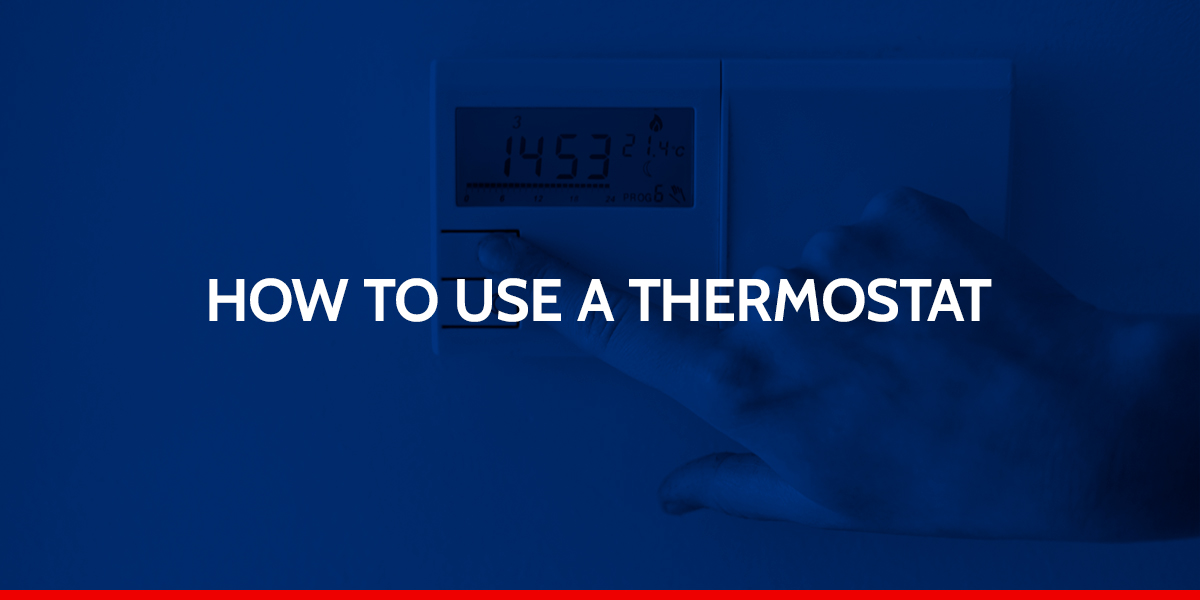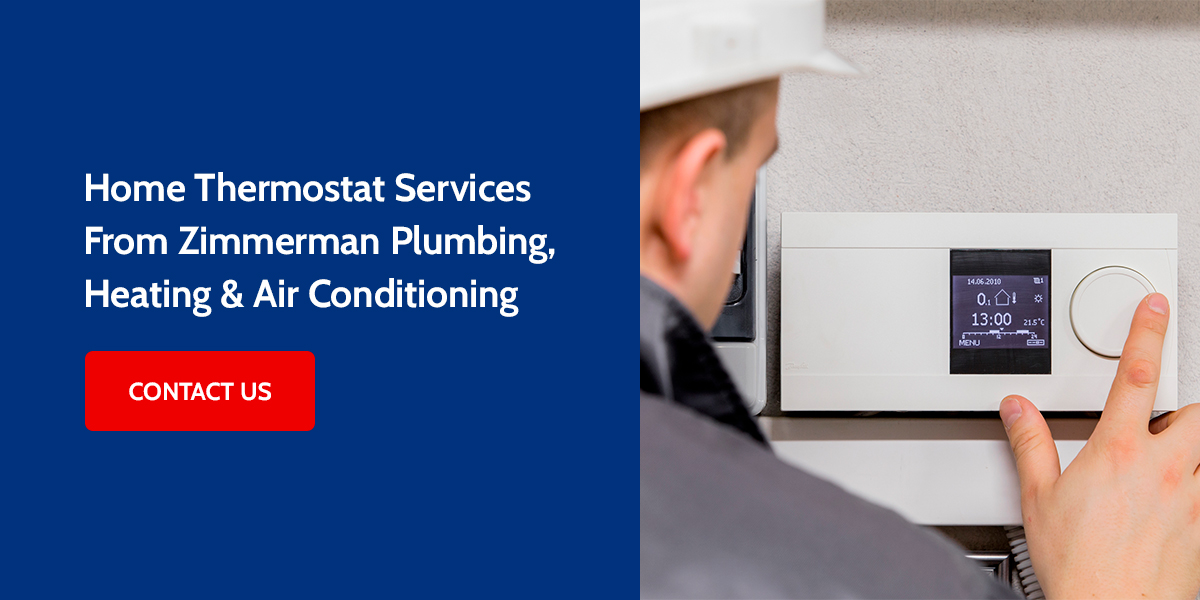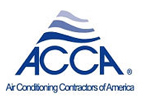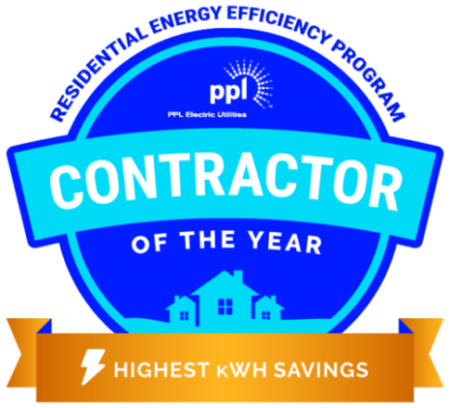What You Need to Know About Thermostats

The thermostat is an essential yet often overlooked part of your home. A heating, ventilation and air conditioning (HVAC) system allows you to regulate temperatures indoors, and a thermostat is the system’s brain. You can interact with this device to switch your system on and off as necessary.
As a homeowner, it’s essential to understand that thermostats are not one size fits all. With continually advancing technology and rising energy prices, you have more options than ever to find the best thermostat for your property.
Learn more about how thermostats work, the styles you can install and how to tell when they’re broken in this guide from Zimmerman Plumbing, Heating & Air Conditioning.
What Is a Thermostat?
The thermostat is the part of your HVAC system that controls temperatures and other system settings. You can use this device to change your home’s HVAC settings and turn on the heating or cooling. Knowing how to set your thermostat is essential for maintaining a comfortable home for you.
Once you set the temperature you want, the thermostat will work towards maintaining that temperature. It will detect any changes and alert the HVAC system to adjust accordingly, raising or lowering the temperature to stay at your preferred setting. If the room is hotter than the temperature you set, the thermostat will activate cooling to bring it back down. If it’s too cold, the system will heat your space until it reaches the designated temperature.
Thermostats come in several configurations, but they’re typically made up of a subbase, the device itself and sometimes additional sensors.
How Does a Thermostat Work?
As the brain of the HVAC system, the thermostat tells the system when to manage a space’s temperature. While there are many kinds of thermostats, they all utilize a sensor.
A thermostat’s sensor relies on thermal expansion, which is when objects change size or shape after they’re exposed to certain temperatures. When the room is too cold, the cool sensor strip lets electrical currents flow and activate the heating process. When it’s warm, a hot strip will expand and bend, blocking the heat transfer fluids to allow cooling to begin.
Certain HVAC systems allow for system zoning. These systems allow you to better control the temperature of different spaces separately by using multiple thermostats, so you can keep some areas cooler or warmer depending on your needs and preferences.
Types of Thermostats
As technology advances and new thermostats are continually developed, you have several options for managing temperatures in your home. Check out these common types of thermostats and their unique features:
- Mechanical: These were once the most common and basic thermostats.
- Digital nonprogrammable: These manually operated thermostats have more advanced digital displays and sensors.
- Programmable: Programmable thermostats work digitally. They let you set schedules to control your home’s temperature at different times of the day or week.
- Wireless: These newer thermostats allow you to control the temperature remotely. Change your HVAC settings from your room, home or elsewhere in the world with the click of a button.
- Smart: In addition to the ability to control temperature settings anytime, anywhere, smart thermostats will learn your unique preferences and adapt to maintain the most energy-efficient and comfortable temperature schedule possible.
How to Choose a Thermostat
With so many options available on the market today, you can find the perfect device for your needs. Consider these factors to find the best thermostat for your home:
- HVAC compatibility: Not every thermostat works with every HVAC system. Before making a decision, ensure the thermostat you want is compatible with your current HVAC model.
- Costs: You can find a thermostat to fit any budget. A basic digital thermostat will provide simply fan and temperature settings. If you’re willing to spend more on additional features, look into wireless or smart options.
- Energy savings: Some thermostats help you conserve energy and lower your energy bills with set heating or cooling schedules. If energy savings is a priority for you, consider programmable and smart thermostats.
- Extra features: Do you want to control your thermostat from anywhere? Is system zoning essential for your home? Pick a thermostat that accommodates your specific needs.
Signs of a Broken Thermostat
A broken thermostat may indicate more serious problems with your heating and cooling system. Keep an eye out for issues such as:
- The room temperature and temperature on the display don’t match: If you can tell that your room is colder or warmer than the thermostat indicates, there may be a problem with the sensor. Like any temperature reading device, there is an allotted temperature discrepancy.
- The thermostat is unable to detect room temperature: A thermostat that is unable to identify the current room temperature cannot properly regulate it.
- Erratic changes: Rapid or unusual changes in your thermostat’s display or temperatures indicate an issue with the system.
- HVAC won’t turn on or off: If your heating or air conditioning is constantly on and won’t turn off, or it won’t turn on at all, there may be a wiring problem.
- Unresponsive thermostat: A thermostat that won’t respond to your commands may be malfunctioning and require repairs.
- Unexpected noises: Hearing unusual noises from your thermostat or other parts of your HVAC system is a potential sign of trouble.
- Increased energy consumption: If you notice a significant difference in your energy costs, you could be dealing with a malfunctioning thermostat and HVAC system.
Minor problems with your thermostat may only need simple fixes or small replacement parts. For instance, many thermostats require batteries that should be changed annually, see our video on how to change thermostat batteries here. Visit our how-to video section for more easy-to-follow video guides.
However, major issues would require a trained professional for repairs or even an entirely new system. For system repairs and replacements, you can call the HVAC experts at Zimmerman Plumbing, Heating & Air Conditioning.
Home Thermostat Services From Zimmerman Plumbing, Heating & Air Conditioning
At Zimmerman Plumbing, Heating & Air Conditioning, we understand your HVAC system inside and out — including your thermostat. If you need installation, maintenance or repair services, contact our experts online or call us at 717-697-3528 today!












